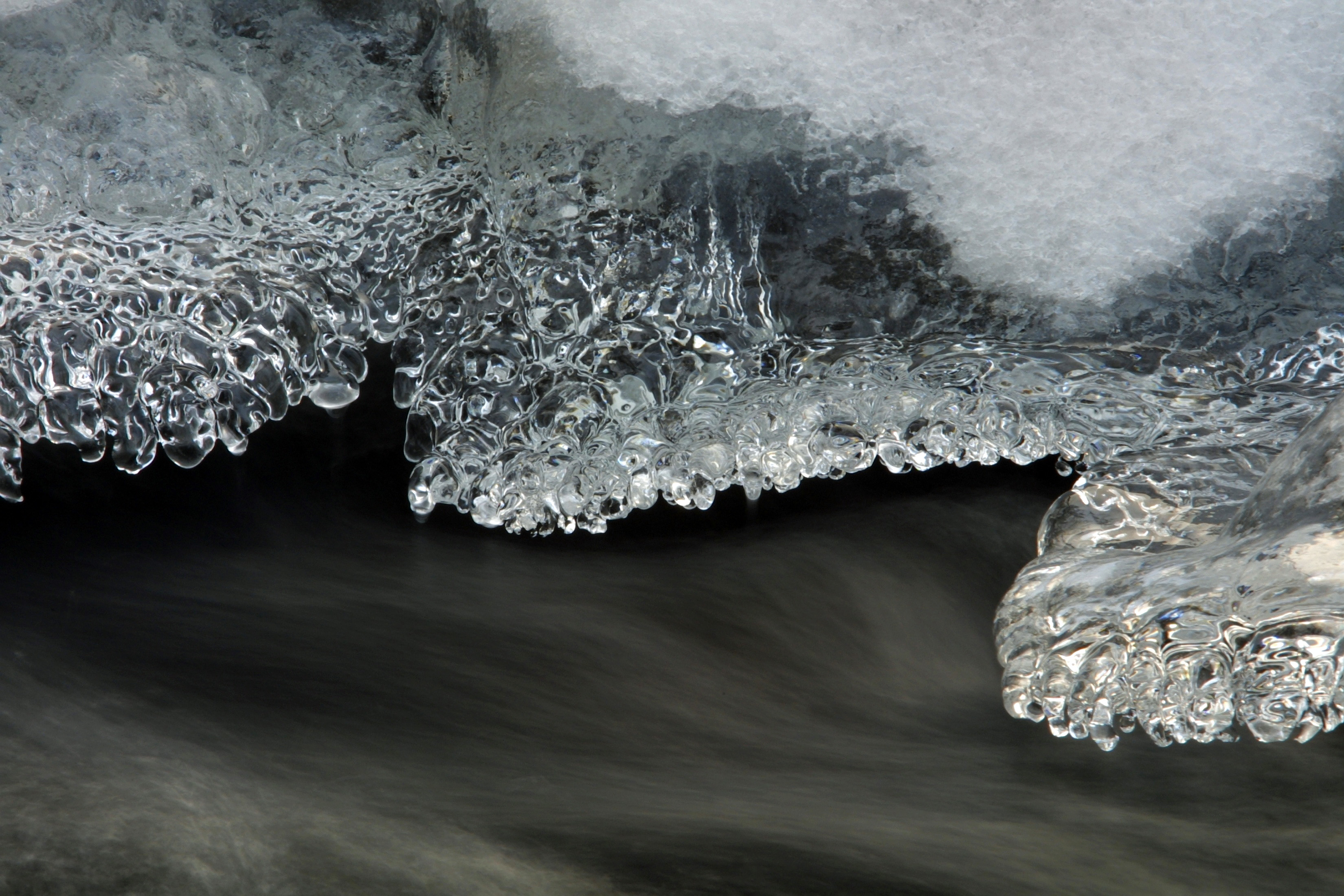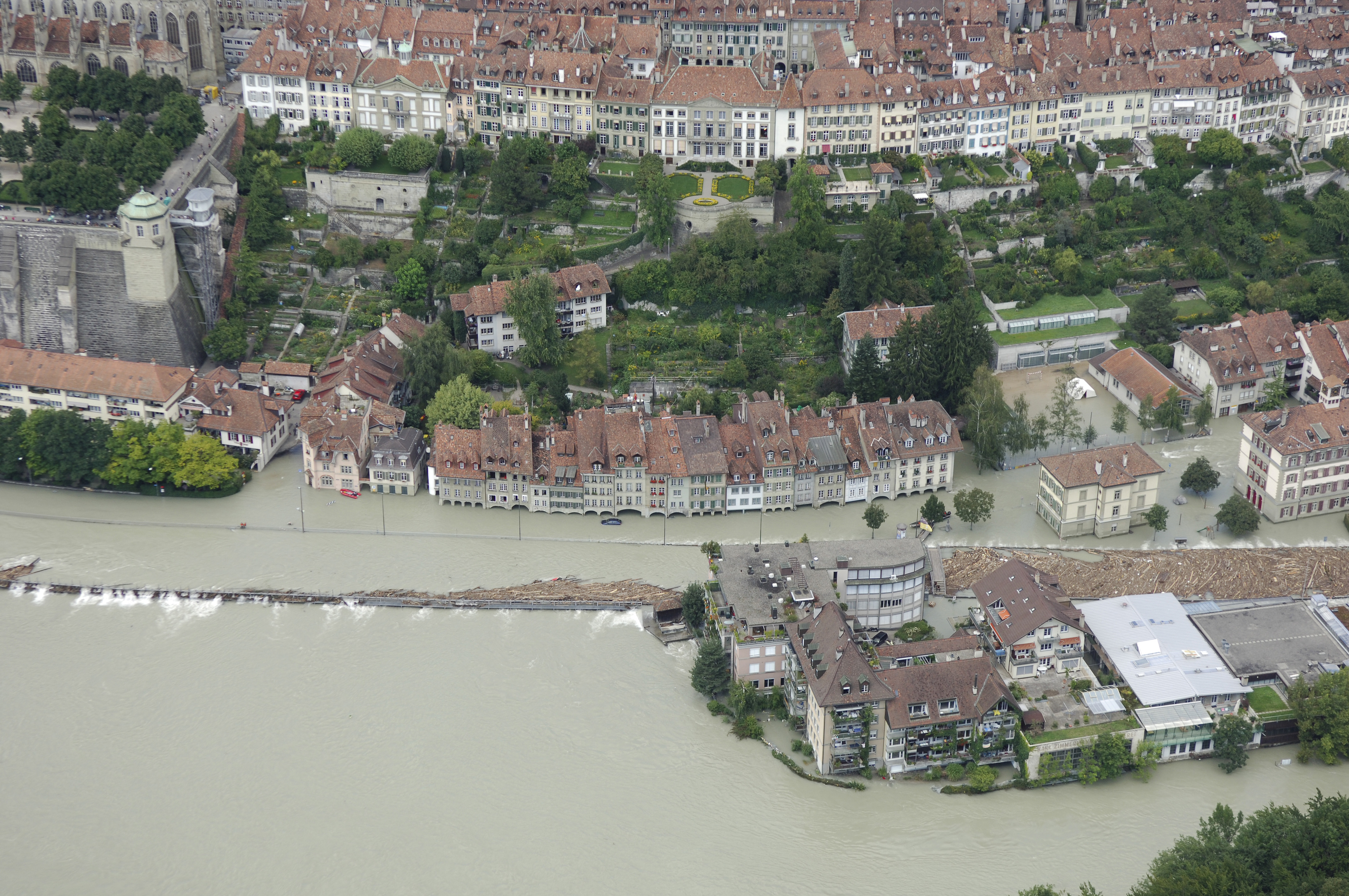Snow monitoring methods reduce flood risk

Thanks to new monitoring techniques that improve flood forecasting, Switzerland is now less prone to the catastrophic type of flooding that has hit the country over the past few decades.
“We can now compare the current situation with other situations in previous years, and tell the flood forecasters if there is significantly more snow than average in the mountains that is due to melt over the next couple of days,” says researcher Tobias Jonas.
Jonas is a hydrologist at the Swiss Federal Institute for Forest, Snow and Landscape Research (WSL), a Davos-based institute carrying out cutting-edge work in the field.
The research is important as half of Switzerland is over 1,000 metres above sea level and a quarter over 2,000 metres, so roughly a third of all annual precipitation is snow. When it melts, it can lead to spring floods. In May 1999, heavy rainfall coincided with the main snowmelt period, resulting in devastating floods causing damage totalling SFr580 million ($626 million).
The disaster raised awareness of snow hydrology in general and led to the monitoring of snow water resources being integrated into the federal flood forecasting system.
Keeping track of the distribution of snow is vital for predicting run off – the water that flows over the land when the soil is saturated and excess water from rain, melt water or other sources cannot be absorbed.

More
Spotting flood risks early saves lives
Monitoring improves
Water produced by melting snow is known by hydrologists as the “snow water equivalent” (SWE). Until recently, this was very difficult to quantify.
There are only about 40 monitoring stations in Switzerland providing SWE data and the measurements are fairly infrequent, as they are time consuming. Teams of scientists have to dig holes in the snow right down to ground level to extract ice cores, which are then weighed.
The turning point was in 2008, when the WSL was asked to estimate how much water from snow was expected to flow into a Swiss lake. If the lake was likely to flood, preventive measures could be taken.
Unsatisfied with available SWE measurements, Jonas came up with a more accurate way of estimating the snow water equivalent. He developed a snow density model based on old SWE data, which he used in conjunction with current snow depth measurements. The latter are provided by observers in 200 different mountain stations and an additional 135 automatic monitors that deliver new figures every 30 minutes.
The main authority for the prevention of natural hazards is the Federal Environment Office. This makes recommendations concerning hazards associated with mass movements, floods and earthquakes. It is also in charge of compiling hazard maps.
The Federal Meteorology and Climatology Office (MeteoSwiss) also plays an important role in disaster risk reduction in terms of forecasts and observing climate change. The Federal Civil Protection Office plans and coordinates emergency measures to be implemented in the case of disasters or acts of terrorism.
Helping flood forecasters
This new technique of combining actual measurements with models enabled the WSL to provide daily maps that show how much water the snow will yield at 350 different stations throughout Switzerland. Snow hydrological bulletins are then sent to flood forecasters.
Thanks to this information, flooding was avoided in Zurich in the winter of 2011. The lake level was controlled so that it rose more slowly than in previous years in anticipation of large amounts of melt water from the mountains.
Switzerland’s water resources are in a constant state of flux, so the institute has to stay abreast of new related research. It was involved in a study published in 2012 by the Federal Environment Office, which investigated how climate change would influence the water balance in Switzerland by the year 2100.
The study, called CCHydro, found that as a result of the rise in the snow line associated with increasing temperatures, the amounts of snow and ice stored in the Alps would be greatly reduced. Experts predicted it would become drier in the summer and wetter in the winter and there would be more droughts and flooding.
The operational snow-hydrological service (OSHD) was set up in 2009 by the Swiss Federal Institute for Forest, Snow and Landscape Research. It monitors the distribution of snow water resources, based on data from several monitoring networks.
The OSHD is integrated into the Swiss federal warning framework for natural hazards. It helps the authorities to take evasive action when heavy rain and melting snow combined put pressure on rivers and lakes.
Fighting drought
In the light of these findings, the WSL is using the experience gained from dealing with floods to improve drought predictions. It is involved in a research project called Drought.ch, part of a National Research Programme (NRP 61) to develop methods for sustainable water management, particularly in shortage situations.
Drought.ch aims to improve the modeling, observation, and forecasting of droughts in Switzerland, and to develop an early warning system to help the authorities in charge of regulating water use in different areas.
By using models in combination with measurements recorded every day of the year, the research team has already made great strides. Drought predictions that were once only available a few days in advance can now be accessed between ten and 30 days before the predicted event.
The researchers take actual measurements of snow cover, precipitation and the amount of moisture contained in the soil below the snowline. Computer models simulate the conditions for the days ahead, based on these figures, and also using historical data from previous years.
“Modern research products like these enable water managers to visualise and interpret information that was not available before,” says Massimiliano Zappa, head of the WSL’s hydrological forecasting research unit.
If a drought seems likely, a hosepipe ban can be imposed, or new restrictions introduced on the use of rivers. River water can be diverted from elsewhere, potentially saving large areas of crops.

In compliance with the JTI standards
More: SWI swissinfo.ch certified by the Journalism Trust Initiative

You can find an overview of ongoing debates with our journalists here. Please join us!
If you want to start a conversation about a topic raised in this article or want to report factual errors, email us at english@swissinfo.ch.